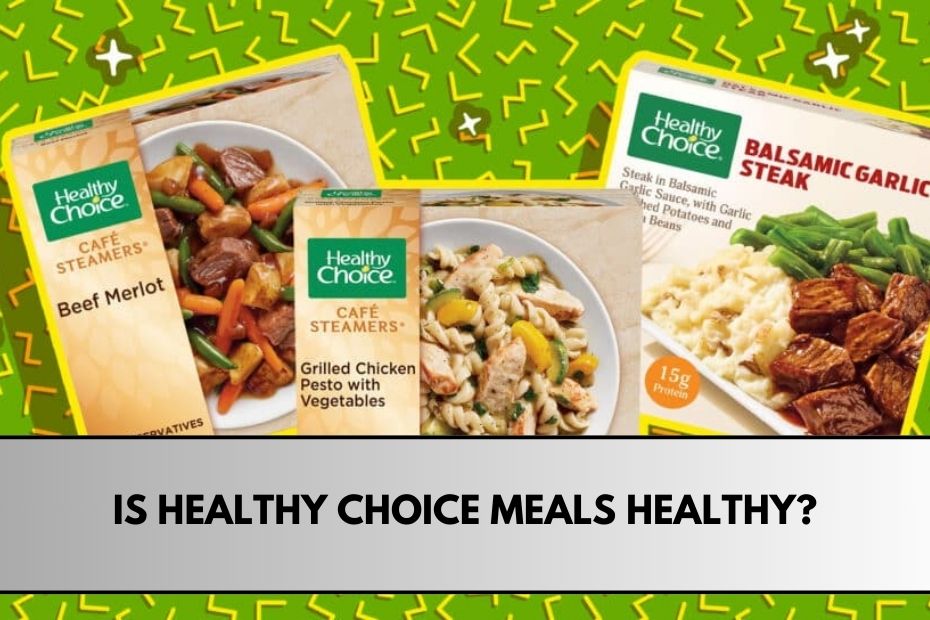In today’s fast-paced world, finding time to prepare balanced meals can be challenging. This is where options like Healthy Choice meals come into play. Designed for convenience, these pre-packaged meals aim to offer a healthier alternative to traditional fast food and processed meals. But, are they truly as healthy as they are marketed to be? In this article, we’ll explore the nutritional value, ingredients, benefits, and potential drawbacks of Healthy Choice meals.
What are Healthy Choice Meals?
Healthy Choice meals are frozen or refrigerated, pre-packaged meals that are designed to provide balanced nutrition in an easy and convenient form. These meals typically include a combination of protein, vegetables, and grains to meet dietary guidelines for a well-rounded diet. Brands like Healthy Choice have gained popularity for their focus on providing options that are lower in fat, sugar, and calories compared to traditional frozen meals.
Nutritional Breakdown of Healthy Choice Meals
Macronutrients
Healthy Choice meals are typically designed to offer a balanced mix of macronutrients—carbohydrates, proteins, and fats. Most meals contain:
- Proteins: Lean meats, poultry, fish, or plant-based alternatives like tofu.
- Carbohydrates: Whole grains, vegetables, and legumes.
- Fats: Healthy fats such as olive oil or avocado, avoiding trans fats and excessive saturated fats.
These balanced meals aim to keep calorie counts within a reasonable range, often between 300-500 calories per serving.
Ingredients in Healthy Choice Meals
What’s Inside?
Healthy Choice meals are crafted with ingredients that are intended to be fresh and minimally processed. Here’s a closer look at what you may find:
- Vegetables: Typically, meals contain a mix of fresh or flash-frozen vegetables to maintain their nutritional content.
- Proteins: Lean cuts of meat, fish, tofu, or plant-based proteins.
- Whole Grains: Brown rice, quinoa, or whole-wheat pasta for healthy carbohydrates.
- Added Flavor: Often, low-sodium seasoning blends, herbs, and spices are used instead of artificial flavorings.
However, some meals might include preservatives or added sugars, which are factors to consider when evaluating their overall healthiness.
Benefits of Healthy Choice Meals
- Convenience: Ideal for busy individuals who don’t have time to cook.
- Portion Control: Designed to provide balanced meals within a specific calorie range.
- Nutritional Composition: Low in unhealthy fats and high in protein and fiber.
- Variety: Offers a wide range of options including vegetarian, low-carb, and gluten-free choices.
- Time-Saving: Quick preparation often requiring just microwaving or oven heating.
Potential Drawbacks
- Added Sodium: Many Healthy Choice meals contain higher sodium levels for preservation purposes, which may not be suitable for individuals on low-sodium diets.
- Processed Ingredients: Some meals include processed ingredients and preservatives, which can be a concern for those aiming for a more natural diet.
- Price: These meals are typically more expensive than cooking from scratch or buying fresh ingredients.
Table: Breakdown of a Typical Healthy Choice Meal
| Component | Description | Nutritional Content |
|---|---|---|
| Protein | Chicken, Tofu, or Lean Meats | High in protein, low in fat |
| Vegetables | Broccoli, Carrots, Spinach, or Mixed Veggies | Rich in vitamins and minerals |
| Grains | Brown Rice, Quinoa, Whole Wheat Pasta | Provides complex carbohydrates |
| Fats | Olive Oil, Avocado | Healthy fats without trans fats |
| Calories | Around 300-500 | Balanced meal with moderate portions |
Powerplant Body
FAQs
Are Healthy Choice meals low in calories?
Yes, most Healthy Choice meals are designed to fall within a calorie range of 300-500 per serving.
Do Healthy Choice meals contain preservatives?
Some meals may contain preservatives to extend shelf life, though healthier options may avoid these.
Are there vegetarian options available?
Yes, Healthy Choice offers a variety of plant-based and vegetarian meals.

